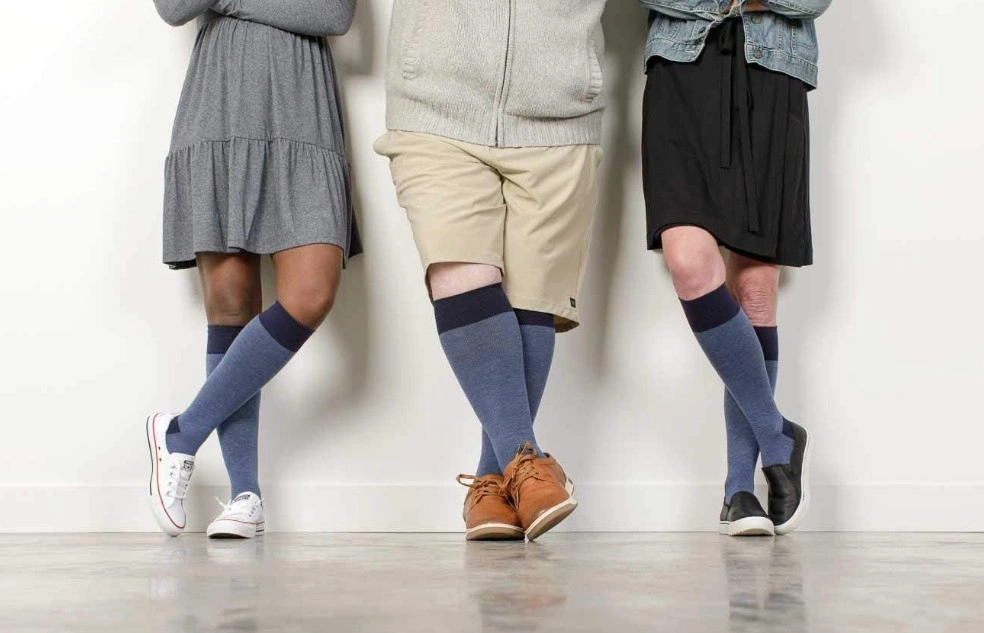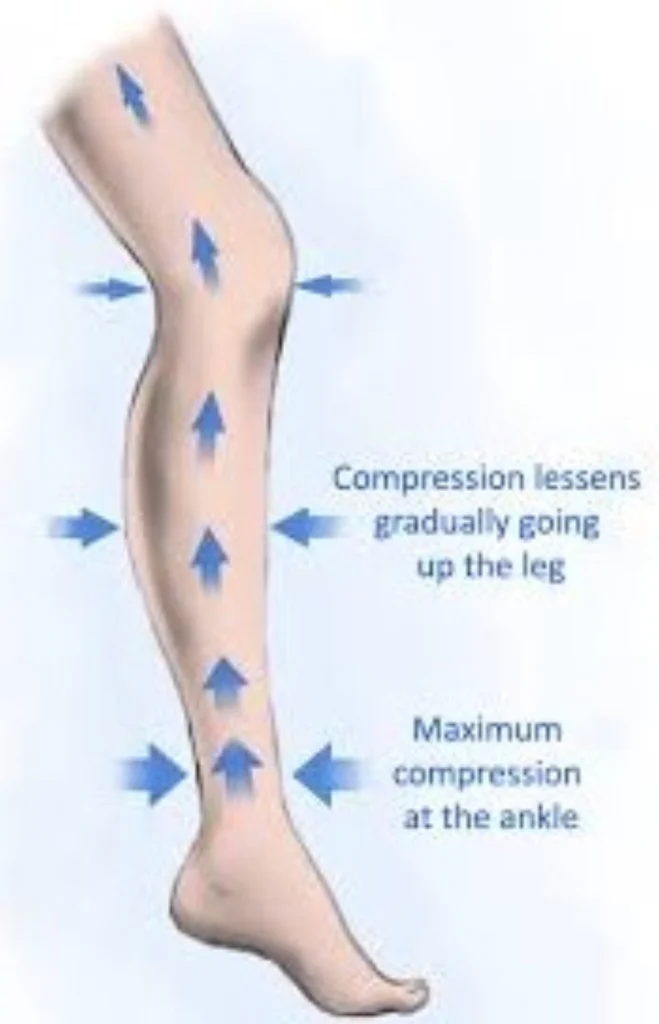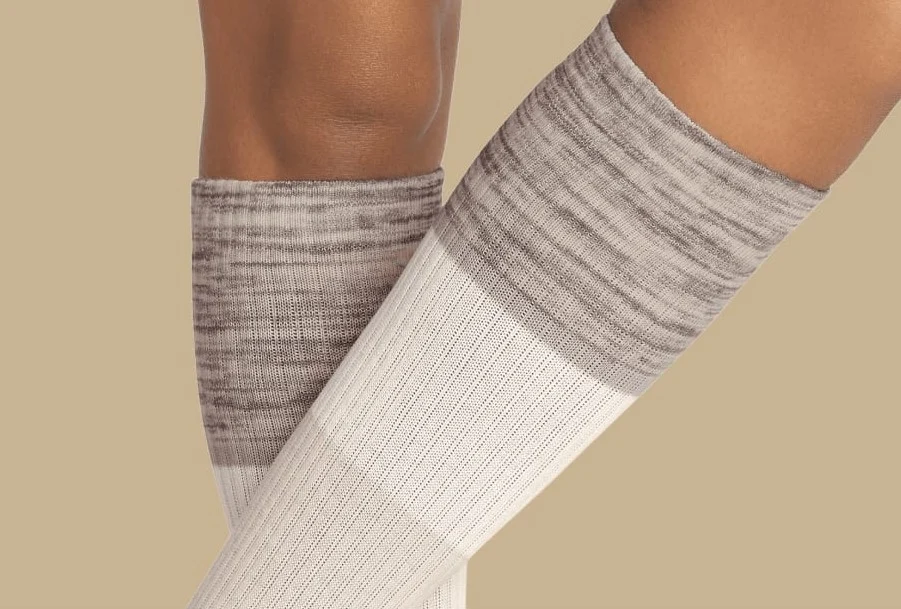Compression socks are no longer just a medical necessity for improving circulation. They have become a versatile accessory that combines health benefits with style. Whether you're dressing for work, heading to the gym, or attending a special event, compression socks can easily be incorporated into your wardrobe. In this article, we’ll dive into how to style compression socks year-round, from casual to formal attire, ensuring that both comfort and fashion are maintained. Let’s explore the best ways to wear compression socks and make them a staple in your daily life.
Introduction: The Growing Popularity of Compression Socks
Compression socks are widely recognized for their health benefits, including improved circulation and reduced swelling. But here’s the kicker: these socks have also evolved into a stylish fashion accessory that can be worn with almost anything. Once considered strictly for medical purposes, compression socks have made their way into the fashion world. As we continue to focus on health and comfort, there’s no reason not to take advantage of their functionality while maintaining an attractive look. Compression socks are now available in a variety of designs, colors, and patterns, making them not only practical but fashionable as well.

Compression socks are versatile enough to be worn in nearly every setting, whether you're at the office, running errands, or enjoying a day outdoors. With the right styling tips, you can wear compression socks throughout the year without sacrificing comfort or style. This article will guide you through styling options for all seasons, helping you feel comfortable and look your best, no matter the occasion.
Understanding Compression Socks
Compression socks are designed to apply gentle pressure to the legs, improving blood circulation by encouraging better venous return. What’s the real story? Compression socks are typically made from a mix of nylon, spandex, and cotton, which helps create the necessary pressure gradient from the ankle upwards. This design ensures that the pressure is greatest at the ankle and decreases as the sock reaches the knee or thigh, depending on the length of the sock.
The primary benefit of wearing compression socks is their ability to improve circulation, which helps prevent fatigue, swelling, and other circulatory problems. Compression socks can also aid in muscle recovery for athletes and prevent conditions like deep vein thrombosis during long periods of immobility, such as during long flights. Different compression levels are available, with mild compression (8-15 mmHg) being ideal for general use and higher compression (20-30 mmHg) often recommended for medical purposes.
Compression socks come in various lengths as well, including ankle-high, knee-high, and thigh-high versions. Knee-high socks are the most common choice for everyday wear, while thigh-high socks might be more appropriate for individuals who suffer from severe circulatory issues or those who are recovering from surgery.
| Compression Level | Intended Use | Best For |
|---|---|---|
| 8-15 mmHg | General circulation | Everyday wear, travel |
| 15-20 mmHg | Athletic recovery | Sports, fitness recovery |
| 20-30 mmHg | Severe swelling/medical | Varicose veins, edema |
The Science Behind Compression Socks
How Compression Socks Improve Circulation
Compression socks work by creating a controlled pressure around the legs, which in turn aids in improving blood flow. By applying compression to the legs, these socks push the blood upward towards the heart, helping to prevent blood from pooling in the lower limbs. This is particularly beneficial for individuals who spend long hours standing, sitting, or traveling, as it minimizes the risk of swelling and enhances overall circulation.

Supporting Muscles and Preventing Fatigue
In addition to improving circulation, compression socks also provide support for the muscles in the legs, which can help prevent fatigue during extended periods of activity. Athletes, for example, use compression socks to reduce muscle vibration during exercise, thereby enhancing their performance and accelerating recovery. The right level of compression can help athletes recover faster, reduce muscle soreness, and prevent injuries such as shin splints or calf strains.
Compression Socks: A Travel Essential
Compression socks are an excellent choice for individuals who need extra support while traveling, especially on long-haul flights. The pressure from the socks helps reduce the risk of deep vein thrombosis (DVT), a condition where blood clots form in the legs due to prolonged immobility. By improving circulation, compression socks help reduce this risk, making them an essential travel accessory.
Choosing the Right Compression Sock for Your Needs
Understanding Compression Levels and Their Use Cases
When selecting compression socks, it’s important to start with the right compression level. Compression is measured in mmHg and typically ranges from mild to firm. If you're wearing compression socks for general wellness, travel, or long hours standing, a mild level (8–15 mmHg) is usually sufficient. This range supports circulation without creating too much pressure. On the other hand, for athletic recovery, medical-grade support, or chronic swelling, you'll likely benefit from medium to firm compression levels (15–30 mmHg). These exert more targeted pressure to reduce fluid buildup, support veins, and encourage blood flow during or after activity. Knowing your goal—whether it's daily comfort or therapeutic impact—helps narrow the right choice.
Material and Fit: Why They Matter More Than You Think
The effectiveness of compression socks depends not only on the pressure level but also on the materials and fit. Materials such as nylon, spandex, and elastane offer a snug, flexible fit that maintains consistent pressure throughout the day. If you're dealing with skin sensitivity or allergies, cotton blends may be more appropriate, offering breathability and softness without sacrificing too much elasticity. Getting the right size is just as critical. Take precise leg measurements, especially around the ankle and calf. Poorly fitted socks—too tight or too loose—can lead to discomfort, reduced effectiveness, or even circulatory problems. A proper fit ensures consistent pressure distribution and maximum benefit.
Compression Socks in Hot Weather: Stay Cool and Comfortable
Compression socks don’t just work in cold weather; they can also be worn during the summer months. Here’s the kicker: when choosing compression socks for hot weather, it’s important to focus on materials that are breathable and moisture-wicking. Look for socks made from lightweight fabrics like nylon or a cotton blend. These materials allow for better airflow, which is essential when you’re dealing with hot temperatures.

In terms of style, opt for ankle-length or mid-calf socks that won’t feel too bulky or hot under your summer outfits. Bright, vibrant colors or subtle patterns can add a fun element to your look while still maintaining the health benefits of compression. It’s also a good idea to pair your compression socks with open-toed shoes, sandals, or sneakers that allow your feet to breathe. This way, you can stay comfortable and cool while enjoying the benefits of improved circulation.
| Summer Use Case | Compression Sock Style | Ideal Fabric |
|---|---|---|
| Travel | Light, breathable socks | Nylon, cotton blend |
| Casual Outings | Bright or patterned socks | Lightweight nylon |
| Outdoor Activities | Mid-calf, cool materials | Cotton, spandex |
Compression Socks in Cold Weather: Stay Warm and Supported
In colder weather, compression socks can provide more than just support for your legs—they can also help keep you warm. Ready for the good part? Compression socks designed for winter wear often feature thicker materials like wool or fleece linings, making them perfect for pairing with boots and other warm clothing. They’re excellent for maintaining circulation while keeping your legs cozy during chilly months.
When dressing for cold weather, it’s essential to layer your compression socks with other winter accessories like tights, leggings, or thicker pants. Knee-high or thigh-high compression socks work best for winter, offering maximum coverage and warmth. Plus, they help prevent the discomfort of cold, stiff legs, especially when you're outside for extended periods, such as on hiking trips or during winter sports. Look for compression socks with reinforced seams and moisture-wicking fabrics to keep your legs warm and dry throughout the day.
| Winter Use Case | Compression Sock Style | Ideal Fabric |
|---|---|---|
| Hiking | Knee-high, warm socks | Wool, fleece |
| Winter Sports | Thigh-high, insulated | Spandex, nylon |
| Outdoor Activities | Thick, thermal compression | Merino wool |
Compression Socks with Casual Wear
Casual wear is perhaps the easiest setting for styling compression socks. What’s the real story? With the right pairing, compression socks can complement your casual outfits, adding both style and comfort. Whether you're wearing jeans, shorts, or a casual dress, compression socks can elevate your look while providing the health benefits you need.
Pair neutral-colored compression socks with jeans or leggings for a subtle and chic look. If you’re going for something bolder, try patterned socks with shorts or skirts to add a playful touch to your outfit. The key is to balance the boldness of the socks with the rest of your clothing to maintain a cohesive look. Compression socks are also a great choice when you need extra support while on your feet for long periods, such as during shopping trips or running errands.
| Casual Outfit | Compression Sock Style | Ideal Color |
|---|---|---|
| Jeans | Black, neutral | Black, gray |
| Shorts | Patterned, colorful | Bold colors, stripes |
| Casual Dress | Plain or subtle patterns | Beige, navy |
Compression Socks for Work: Blending Style and Comfort
Compression socks are also perfect for wearing at work, particularly for those who spend long hours standing or sitting. This is where it gets interesting: compression socks can help reduce fatigue, improve circulation, and prevent swelling, all while looking professional. When dressing for work, opt for low-profile socks in neutral colors that won’t draw too much attention but still offer the benefits of compression.
Pair black or gray compression socks with business attire such as slacks, skirts, or blouses. For those working in more casual office environments, you can play around with more colorful or patterned socks, as long as they remain subtle and don’t overpower the outfit. Compression socks are especially beneficial for those in professions where they are on their feet all day, as they help prevent leg and foot fatigue.
| Work Attire | Compression Sock Style | Ideal Color |
|---|---|---|
| Business Casual | Thin, discreet socks | Black, gray |
| Office/Standing | Medium compression | Neutral, dark tones |
| Creative Office | Colorful, patterned | Subtle colors |
Compression Socks for Athletes: Support During Workouts and Recovery
For athletes, compression socks can play a significant role in improving performance and aiding recovery. Here’s the kicker: compression socks are designed to provide support and stability to the muscles, reducing the risk of injury and speeding up recovery after exercise. Many athletes use compression socks to reduce muscle soreness, improve endurance, and prevent swelling during and after training.
Compression socks are commonly used in sports like running, cycling, and long-distance events. They provide support to key areas like the calves and shins, preventing injuries such as shin splints and calf strains. By improving circulation, compression socks also help reduce the lactic acid buildup in muscles after exercise, aiding in quicker recovery.
Special Occasion Compression Socks: Comfort for Weddings and Events
Special occasions like weddings, parties, and other formal events don’t have to mean uncomfortable shoes or long hours on your feet. What’s the real story? Compression socks can keep you comfortable, even during long events, and there’s no need to sacrifice style for comfort. Choose thin, neutral-colored socks that are barely noticeable under your formal attire.
If you’re attending a wedding or formal event, go for knee-high compression socks in a color that matches your outfit. For men, black or dark gray socks work well with a suit, while women can opt for beige or nude-colored socks that blend seamlessly with dresses and skirts. Compression socks for special occasions are an excellent option for long periods of standing or walking, ensuring you stay comfortable and supported without anyone noticing.
| Event Type | Compression Sock Style | Ideal Color |
|---|---|---|
| Weddings/Parties | Thin, discreet | Beige, black |
| Travel | Light, breathable | Black, navy |
| Long Events | Low-profile, sleek | Black, neutral |
Maintaining and Caring for Compression Socks
To keep your compression socks looking good and performing at their best, proper care is essential. What’s the real story? Compression socks need to be washed regularly, but they should be treated with care to ensure they retain their elasticity and effectiveness. Always follow the manufacturer's instructions for washing, as some materials may require gentle handling to maintain their shape and compression ability.
Avoid using fabric softeners, as these can break down the fibers and reduce the sock’s effectiveness. Instead, wash compression socks in cold water and air dry them to prevent damage from high heat. Storing them in a cool, dry place will also help maintain their quality and longevity. With proper care, your compression socks will continue to provide you with the support and comfort you need for years.
| Care Step | Recommended Method | Additional Tips |
|---|---|---|
| Washing | Cold water, gentle cycle | Avoid fabric softeners |
| Drying | Air dry, flat | Avoid high heat |
| Storage | Keep in a cool, dry place | Use a mesh bag |
Conclusion: Making Compression Socks a Stylish and Comfortable Staple
Incorporating compression socks into your wardrobe doesn’t have to mean sacrificing style for comfort. Whether you’re dressing casually, heading to work, or attending a special event, compression socks offer both health benefits and a fashionable edge. With a wide range of styles, colors, and patterns available, there’s a compression sock for every occasion. Ready to find the perfect pair for your wardrobe? Don’t wait—make compression socks a staple in your fashion repertoire today!
FAQ
What are compression socks?
Compression socks are specially designed hosiery that applies pressure to the legs, improving circulation and reducing swelling. They are commonly used for medical purposes and athletic recovery.
How do compression socks work?
Compression socks work by applying graduated pressure to the legs, promoting blood flow and preventing fluid buildup. This helps reduce swelling, fatigue, and discomfort.
Can I wear compression socks with casual outfits?
Yes! Compression socks can be styled with jeans, shorts, or skirts. Pair them with casual footwear like sneakers or boots to complete the look.
How do I choose the right compression socks for formal attire?
For formal wear, choose compression socks in neutral colors like black or beige. Look for thinner, low-profile socks that won't distract from your outfit.
Are compression socks only for athletes?
No, compression socks are beneficial for anyone who needs to improve circulation, whether you're traveling, standing for long periods, or recovering from surgery.
